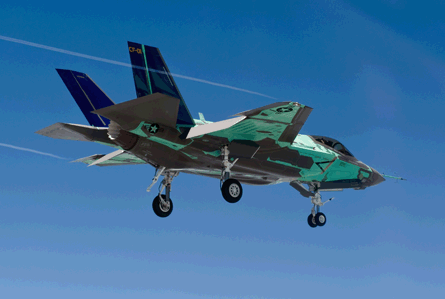Lockheed Martin is ahead on the overall schedule for F-35 flight test, but the short take-off and vertical landing (STOVL) variant risks falling behind due to lingering problems affecting a single aircraft.
The aircraft named BF-1 famously completed the first vertical landing on 18 March, the most vivid display of a resurgent flight-test programme that is now running ahead of schedule by about 10%, according to programme officials.
Since that milestone event, however, BF-1 has landed vertically only once more. The aircraft required an extended period of maintenance to fix mechanical problems unrelated to the STOVL propulsion capability, says Tom Burbage, Lockheed Martin vice-president.
 |
|---|
© Lockheed Martin |
Minor glitches, such as malfunctioning actuators on the 13 doors that open and close on STOVL variants, caused the recent maintenance period, Burbage says.
The aircraft was due to fly again on 20 July on a checkout flight that programme officials hope restores BF-1's sortie rate.
As the first weight-optimised aircraft produced in Lockheed's F-35 factory, BF-1 has historically faced greater reliability challenges than other flight test aircraft.
Lt Gen George Trautman, head of the US Marine Corps' aviation branch, says BF-1 has averaged 5.8 sorties a month versus the goal of seven a month.
"It has not turned the sortie rates that we need," Trautman says.
For the programme to remain on schedule, BF-1's reliability must improve. It is assigned to clear the flight envelope for short take-offs and vertical landings. Until BF-1 expands the flight envelope, the other four STOVL flight test aircraft are restricted in short take-off and vertical landing envelope.
The next major step for the programme comes in March 2011, when BF-1 is scheduled to prove the F-35B can operate from the USS Wasp amphibious carrier. For that phase of testing to begin, BF-1 must complete about 50 vertical landings over land, Burbage says.
There is little room for more delays in the STOVL programme. By December 2012, the US Marine Corps plans to declare initial operational capability for the first squadron of 10 F-35Bs.
On the other hand, there is nothing magic about that date either, Trautman says. The USMC's AV-8B Harriers and F/A-18 Hornets will remain in service for more than a decade.
- All the latest news, video and images from the 2010 Farnborough air show - New this year, live streaming video of each day's flying display
Source: Flight Daily News



















